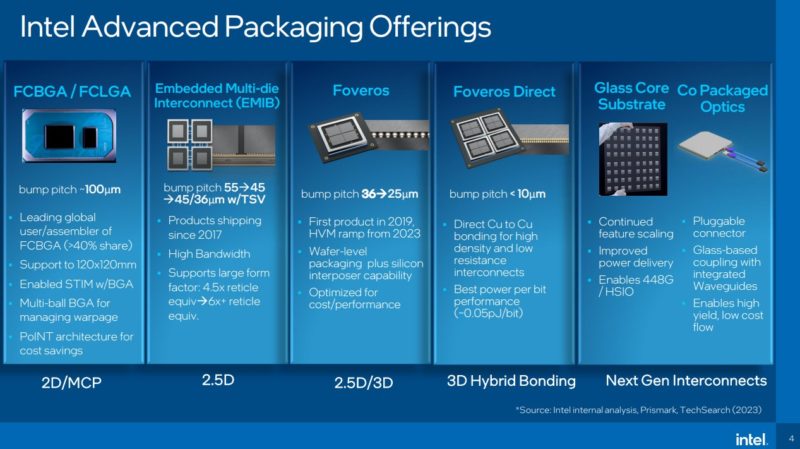Introduction
In a groundbreaking announcement, Intel, a pioneer in semiconductor technology, has unveiled a paradigm-shifting advancement in chip substrate design—glass substrates. This innovation is set to revolutionize the semiconductor industry and catalyze the creation of extraordinarily powerful processors by the end of this decade.
In this blog post, we delve into the implications of this transformation and the potential it holds for the future of computing.
Follow us on Linkedin for everything around Semiconductors & AI
The Shift from Silicon to Glass Substrates
Intel’s recent announcement signifies a major shift from traditional silicon-based substrates to glass substrates in semiconductor chip manufacturing. The transition to glass substrates is propelled by the need for improved design and enhanced connectivity of transistors within a chip package. When compared to organic materials, glass substrates showcase superior mechanical stability and significantly higher interconnect density. This makes them exceptionally well-suited for crafting high-performance chip packages, especially in the context of data-intensive workloads in artificial intelligence.
Intel has announced that it plans to deliver processors with 1 trillion transistors on a package by 2030, using glass substrates as a key technology. Glass substrates offer a number of advantages over traditional organic substrates, including:
- Ultra-low flatness, which is important for lithography and interconnect alignment
- Superior thermal and mechanical stability, which allows for higher-power chips and more efficient heat dissipation
- Higher interconnect density, which allows for more transistors to be connected in a package
Intel has been researching and developing glass substrate technology for over a decade, and it is now confident that it can be used to produce chips with 1 trillion transistors or more. The company plans to introduce glass substrate technology in its next-generation advanced packaging solutions, which are scheduled to debut in the second half of this decade.
Read more: Intel Lost Decade: 5 Reasons Why Chip Giant Did Fall Behind
Intel’s Vision: A Trillion Transistors by 2030
Intel envisions a future where semiconductor chips can accommodate a staggering one trillion transistors by the year 2030.
To put this into perspective, the A17 Pro processor in Apple’s iPhone 15 Pro currently holds 19 billion transistors, while Intel’s Ponte Vecchio supercomputing processor boasts over 100 billion.
This ambitious goal reflects Intel’s commitment to pushing the boundaries of technological innovation.
What are Silicon’s Limitations Vs Glass Substrates
Intel predicts silicon with organic materials will hit scaling limits in a decade. Glass substrates can handle higher temperatures and provide a crucial solution. They propel the semiconductor industry forward with superior properties.
Silicon is a great material for making transistors, but it has some limitations. One problem is that silicon is not very stable at high temperatures. This can lead to problems with heat dissipation in high-performance chips. Another problem is that silicon is not very flexible, which makes it difficult to use in new types of devices, such as wearable electronics.
Glass substrates offer a solution to both of these problems. Glass is very stable at high temperatures, and it is also very flexible. This makes it an ideal material for use in next-generation chips and devices.
Here is a simpler explanation of how glass substrates solve silicon problems:
Heat dissipation: Silicon chips can generate a lot of heat, which can cause them to malfunction. Glass substrates are better at conducting heat than silicon, so they can help to keep chips cooler.
Flexibility: Silicon chips are brittle and can easily break. Glass substrates are more flexible, so they can be used in devices that need to be bendable or foldable.
Overall, glass substrates offer a number of advantages over traditional silicon substrates. They are more heat-resistant, more flexible, and can support more transistors. This makes them ideal for use in next-generation chips and devices.
Here is an analogy that may help to understand the benefits of glass substrates:
Imagine that you are trying to build a house. Silicon is a great material for building the foundation and walls of the house, but it is not a good material for the roof. Glass is a better material for the roof because it is transparent and lightweight.
Similarly, silicon is a great material for building the transistors in a chip, but it is not a good material for the substrate that supports the transistors. Glass is a better material for the substrate because it is heat-resistant and flexible.
Intel’s announcement that it plans to use glass substrates in its next-generation chips is a significant milestone in the development of next-generation computing technology. It shows that the company is committed to maintaining its leadership position in the semiconductor industry.

The Road to Moore’s Law
Moore’s Law doubles transistor count on a chip every two years. It’s a cornerstone of the semiconductor industry. Intel views glass substrates as key to advancing Moore’s Law. Glass offers enhanced scalability and interconnect density. This fuels progress in semiconductors, securing Moore’s Law’s future.
Conclusion
Intel’s glass substrate breakthrough is a game-changer in semiconductors. By 2030, we could see trillion-transistor chips, revolutionizing computing. Glass outshines silicon, promising limitless computing potential. Intel’s relentless R&D heralds a transformative era in semiconductors, promising unmatched computing power.




